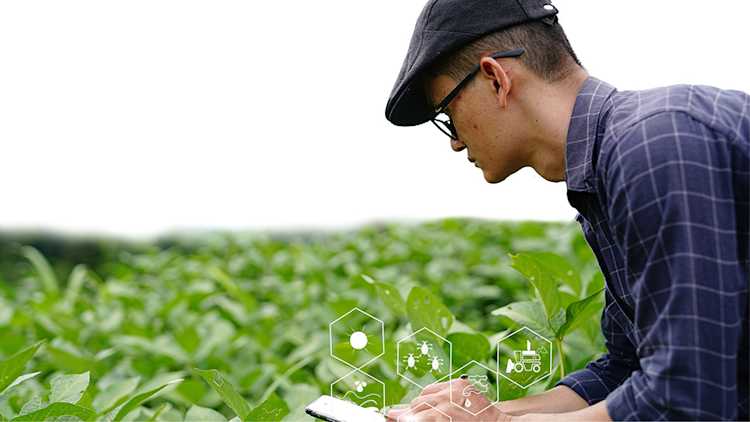How AI can help boost sustainability, productivity and compliance

Artificial intelligence (AI) is a game-changing technology for many industries, and agriculture is no exception.
While some farm operators are already leveraging AI – the simulation of human intelligence – to improve productivity and efficiency, experts predict its role in agriculture will expand significantly in the coming years.
Many farmers are cautious about data collection, often sitting on vast amounts of information without knowing how to use it effectively. However, data can be a powerful tool for decision-making – for example, leveraging satellite imagery to monitor crop performance. According to Trent Burton, FCC AgExpert’s director of development, “AI technology has the potential to help us combine data into one place and make sense of it without having to be a data scientist.”
AI and smart sensors
AI can provide a decisive advantage in analyzing environmental data and enhancing sustainability.
AI can provide a decisive advantage in analyzing environmental data and enhancing sustainability.
Post-secondary institutions and early adopter farm operators are working to develop and train AI models that use data to make inferences, predictions and autonomous decisions in crop production.
For instance, Ontario Tech University researchers, in partnership with technology companies, have developed an energy-efficient greenhouse at Willowtree Farm in Port Perry, Ont. The 350-square-metre facility uses AI to monitor plant health, gather data and trigger early interventions.
At Nature Fresh Farms in Leamington, Ont., operators use Internet of Things (IoT) sensors to gather real-time data to optimize lighting and irrigation – decisions traditionally handled by humans. These advancements increase fruit and vegetable production, reduce worker demands and benefit the environment by lowering power and water use.
Predictive analytics
In the field, AI-powered predictive analytics uses soil sensors, satellite imagery, weather data, and other sources to assess crop health and anticipate pest or disease outbreaks. This can enhance efficiency and reduce environmental impacts.
For example, AI tools that identify pests, track their growth and recommend precise treatments can significantly reduce pesticide use. Spot-spraying technologies that combine computer vision and machine learning apply herbicides only where weeds occur, minimizing chemical application.
Enhancing sustainability and compliance
Since AI models are only as effective as the datasets that train them, ongoing research and development are critical to delivering high-performing solutions that drive sustainability and regulatory compliance.
Many of these innovations are being trialled through the Pan-Canadian Smart Farm Network, a collaborative initiative led by Olds College of Agriculture and Technology involving smart farms across Alberta, Saskatchewan, Manitoba and Ontario.
If you want to adopt AI on your farm operation, maximize your investment by collaborating with third-party advisors to navigate product selection, implementation and data integration. This will help ensure that AI delivers measurable benefits for sustainability and compliance.
From an AgriSuccess article by Rebecca Hannam.
